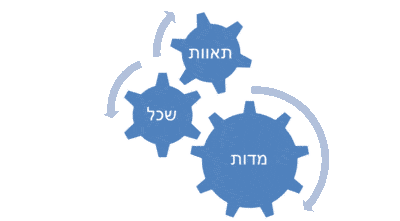My Torah
Essays 2018
MyLife Essay Contest 2018
Lots of Questions
We do Mitzvos every day or at least we try to. We celebrate all the holidays and eat all the lovely kosher food that comes along with them. We do our best at learning the Torah and understanding its laws.
But do we ever take a moment to think about why we are doing what we are doing? For a lot of us, we grew up with Torah. We can not think of life without Torah and the question of “why” doesn’t exist or at least doesn’t feel like it really needs to be answered. “What do you mean ‘why do I put on Tfillin’? How could I not”? It’s what I do. It’s all I know.
We recently read the portion of Yisro, the portion which talks about possibly the most pivotal and life changing moments in all of Jewish history: the acceptance of the Torah. Our accepting of the Torah was the official marriage ceremony between us and Hashem. We became “the chosen people”.
So we accepted the Torah, now what? Obviously there are the laws that come along with it; Shabbos, kosher, ways of dressing, education, etc… But is that what makes us different than all other nations? Is that what makes us “chosen”? Other nations and religions have charity, repentance and prayer too?
Short Answer
Although we may do the right things, we will always remain the same unless there was some way to internalize the Torah; to make the Torah my Torah. If we don’t internalize it, it becomes a burden on us. It’s just a book of a bunch of laws that because our ancestors kept it, we do as well. If we make the Torah not just a part of our lives but the whole essence of who we are, it becomes ours.
Longer Answer
The question is how? The answer can be found in the word “Chabad”. The word Chabad is an acronym of the three words: Chochmah, Binah, Daas. These are the three stages in understanding an idea. Chochmah is the first stage of understanding an idea. It’s the initial flash of wisdom that you get when being introduced to an idea. Binah is developing and breaking the idea down and really grasping it to the point that you can explain it to someone else. Chochmah and Binah create emotions, like love and fear of Hashem. What is Daas? Daas is the answer to all of our questions.
Daas is the strong and deep connection to an idea. To explain – a person can be very wise by using his power of Chochmah and have a great understanding in Hashem and His greatness by using his power of Binah, but unless he uses his Daas by deeply concentrating and fixing his mind on the idea, the idea just will not affect him. He won’t create any true fear or love of Hashem in his heart. This is what the Alter Rebbe explains in chapter three of Tanya.
What about Daas makes it so important, so powerful? It is because Daas is not so much about understanding the idea or feeding me more information. Daas is when I identify myself with the idea and make it personal. Without it, the idea is just not me. Once I identify with what I am dealing with, now it becomes me. In other words, Daas is when I am in the center.
The Rashbatz, who was the teacher of the Previous Rebbe, once explained the idea of Daas with a story:
There was once a peasant who had hired a teacher for his children. Because the simple peasant couldn’t read, he would give the letters he received in the mail to the teacher to read for him. One day, the peasant hands a letter to the teacher and the teacher sees that it’s a letter informing the peasant that his father had passed away. Cautiously, the teacher read the letter and the peasant fainted.
The question is: the peasant only heard that his father had passed away, yet he fainted. The teacher saw in the letter that he passed away yet the teacher was fine? The answer is obvious yet so fundamental. For the peasant, it was his father. For the teacher, it may have been sad to read that letter but what does it have to do with him? Has his life changed?
When a person studies a piece of knowledge, it could be that he and the idea remain two separate things. The idea doesn’t affect him. It’s not “his father”. However, when a person uses his Daas, he strengthens himself and becomes one with the idea. Not just that he understands the idea; he feels it because it is his.
[Another way of describing Daas is as follows: there are children who are brilliant, gifted with a great sense of understanding. Yet they are immature and irresponsible. They can understand that cars in the street are dangerous but when it comes to catching a ball headed towards the street, they run right into the street. In this sense, Daas is a maturity that generally comes with age.]
However Daas isn’t just going to come. I obviously (like everything in life) have to work for it. Once I start attaching myself to ideas, I become changed by them. So when I have good and bad in front of me, whichever one I choose to get involved with will have an everlasting effect on me. What I choose to connect to and define myself by is all dependent on Daas.
Still Part of the Answer
What does Daas accomplish? What is the problem that Daas comes to solve? In short (because there’s a character limit for this essay), there are two cycles that are going on in your life; one you are aware of and the other you probably had no idea even existed. I probably need to explain a little more.
A person has his character. It is what we call “middos”. It’s your personality; what you like and what you don’t like. How did you get this character of yours? It can come from many things. Maybe it came from society. Society these days is very into clothing so you start having an affinity towards clothing. You like a certain style of clothing because it’s what’s “in” these days. You become a shopaholic. You now have a characteristic of “clothing lover”. Or because society has built a definition of success by how much money you have, you become a very greedy person. Society clearly has a strong effect on us. As do our friends. Your friends smoke, soon enough you find yourself smoking yourself. This is step one: your middos.
However your middos do not just stop there. They affect your mind which is step two. You see a value in money [created by society], your mind will come up with hundreds of reasons why you must have money. It will tell you money is good. Money will make you happy. Only the rich are successful. And you really become convinced by all this. If someone tries to explain to you otherwise you’ll shut that person and his ideas out of your mind. In Chassidus this is called “your mind being subservient to your middos”. Your middos literally dictate what you think. Because I value food [middah alert!], I can only think about food.
This all leads to step 3 which is taavos, your desires. Obviously whatever you value, and for sure what you think about, will cause you to want that thing. Your taavos can be money, food or clothing for example.
This is all the conscious cycle. A person can become aware that this going on. It may not be constantly on your mind but you know it is happening. However by the time you realize what’s going on it’s very hard to get out of it.
Conscious Cycle
Then there’s the sub-conscious part of you. This is the part that we don’t always realize that it’s going on. But it’s there and it’s what’s causing the previous three steps. What is it you may ask? It is what I choose to identify myself by. It is what I chose to connect myself to. You see, you can have the worst character traits and the most horrible thoughts but there’s a way to detach yourself from them and tell yourself “this is not me”.
This is actually what the Beinoni, the intermediate one in Tanya does. He has bad desires even from forbidden things but he doesn’t let them define who he is as a person. The Beinoni knows that “who am I”? I am a servant of Hashem (as it says in chapter fifteen of Tanya).
Obviously we all have to work on our middos and our thoughts by trying to remove our mind from them and not focus on them willingly. However, what we choose to identify ourselves by is the true key to our success.
Ask yourself what you really want: Food or Torah? Football or Hashem? Torah is what you’re really interested in (and you know it). It’s what you really desire because you see the value and truth in it. And there’s only one truth in this world and that’s Torah. So you accept that interest upon yourself. Then you connect and identify with it; Daas.
The answer to so many things in life is Daas. Daas really has two parts to it. The first is detachment. I take myself above the situation and really think about who I really am; who I really want to be. Then comes the second part of Daas: attachment. I choose with the free choice that I have to become that person. Daas is creating our own self-definition. I choose what to identify and connect myself to. This is me. This is what I know is right. Why? Because it is the truth. It’s Torah.
You have that free choice. It says in chapter fourteen of Tanya: “habechira ve’hayicholes ve’hareshus nesunah lechol adam.” Which means that free choice, ability, and power was given to every person. Connect, identify with good – you will start thinking positively. Connect, identify with bad – you will think negatively.
Take Action
So I was thinking about all of the above, and I thought to myself that this really doesn’t make too much sense. Because you can’t just tell someone who has problems, “don’t identify with your problems.” You can’t just sit in a chair and think and try not identifying with them; you have to do something about them. Action is a big key here.
Without doing something about it, you can identify all you want but you’re not going to get too far. For someone who is obese, for example, you don’t just tell them “don’t identify with being overweight.” No! You tell them go on a diet! Exercise! We obviously need action as well as the ability to identify and connect ourselves with good.
So you might ask: how do I connect with something I have no interest in? There are two approaches and both are necessary:
- Just do – Along with the action, you will start seeing value in what you do.
- Think – Contemplate on the value of good and on the value of Torah and you’ll come to want to connect to it.
Reb Ahron Halvei from Barcelona gives us great life coaching tips in his Sefer Hachinuch (where he goes through the mitzvos in great detail):
ספר החינוך מצוה טז
ואל תחשוב בני לתפוש על דברי ולומר, ולמה זה יצוה אותנו השם יתברך לעשות כל אלה לזכרון אותו הנס, והלא בזכרון אחד יעלה הדבר במחשבתנו ולא ישכח מפי זרענו, כי לא מחכמה תתפשני על זה, ומחשבת הנער ישיאך לדבר כן. ועתה בני אם בינה שמעה זאת, והטה אזנך ושמע, אלמדך להועיל בתורה ובמצוות. דע כי האדם נפעל כפי פעולותיו. ולבו וכל מחשבותיו תמיד אחר מעשיו שהוא עושה בהם, אם טוב ואם רע, ואפילו רשע גמור בלבבו וכל יצר מחשבות לבו רק רע כל היום, אם יערה רוחו וישים השתדלותו ועסקו בהתמדה בתורה ובמצוות, ואפילו שלא לשם שמים, מיד ינטה אל הטוב, ובכח מעשיו ימית היצר הרע, כי אחרי הפעולות נמשכים הלבבות. ואפילו אם יהיה אדם צדיק גמור ולבבו ישר ותמים, חפץ בתורה ובמצות, אם אולי יעסק תמיד בדברים של דופי, כאילו תאמר דרך משל שהכריחו המלך ומינהו באומנות רעה, באמת אם כל עסקו תמיד כל היום באותו אומנות, ישוב לזמן מן הזמנים מצדקת לבו להיות רשע גמור, כי ידוע הדבר ואמת שכל אדם נפעל כפי פעולותיו, כמו שאמרנו.
He writes that a person should know that he is affected by his actions. A person’s thoughts follow their actions, be it good or bad. And even the most sinful person whose heart and mind is in all the wrong places, if he will be inspired to try hard to do what is right in Torah and Mitzvos, even if it’s not for Hashem’s sake, he will immediately change for the better. With his actions, he will kill his evil inclination. And then he writes (the most fundamental and actionable part of this essay): “…because one’s heart follows their actions”.
Your behavior dictates everything. So the next time you may be in a crummy mood or swamped by unwanted, stressful thoughts, just know that it all starts and ends with your behavior. DO something!
Sub-Conscious Cycle
Once, a certain individual was condemned to the Alter Rebbe as a hypocrite. “He considers himself a chassid,” the Rebbe was told, “and has assumed all sorts of pious customs and practices. He acts like a real holy fellow. But it’s all superficial – internally, his mind and heart are as coarse and unrefined as ever.”
“Well”, said the Rebbe, “in that case, may he meet the end that the Talmud predicts for such people”.
The ‘informers’ were taken aback. They had merely desired to ‘warn’ the Rebbe about this individual. But now, what sort of calamity had the Rebbe called down upon him?
The Alter Rebbe explained. In the final Mishnah of the tractate Pe’ah, the Talmud discusses the criteria for a pauper to be eligible to receive charity. The section concludes with the warning: “One who is not in need but takes…one who is not lame or blind but makes himself as such, will not die of old age until he is indeed as such.”
“In the same vein,” concluded the Alter Rebbe, “one who makes of himself more than he is in matters of righteousness and piety, will eventually find that these traits have become ingrained in his character and very being”.
You see from this story that the expression “fake it ‘till you make it” is actually not such a bad idea after all – as long as it’s for good and holy things).
So you see how important action is. You see that keeping Shabbos and putting on Tefillin is important. And how do we allow that action to affect us, to change us? It’s through our Daas. This is what “Chabad” is about. It’s about using our head. Lifting up our head and using it to connect with G-dliness.
When we use our Daas to connect ourselves with good and positivity, then it will be good (“tracht gut, vet zein gut”- because it’s your thinking of good that made it good). And when we connect and identify with the holiness of Torah (Daas), we then start appreciating Torah and valuing it (Middos-Personality). Once this happens, we start thinking Torah (Sechel-Mind) and ultimately the only thing we crave is Torah (Taavos-Desire). So give yourself up to Torah, “ibergegebenkeit tzu torah”. Once everyone’s minds are filled with Torah, Moshiach has to and will come!



